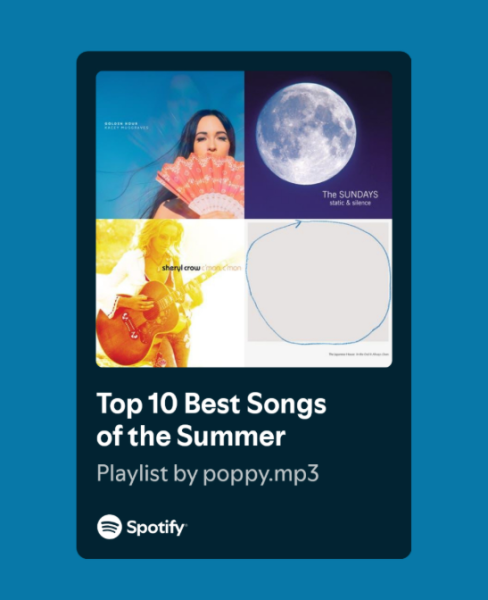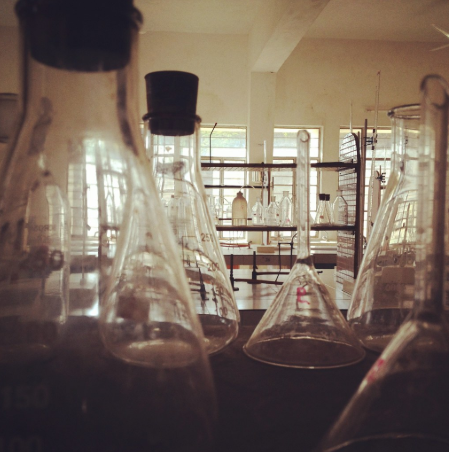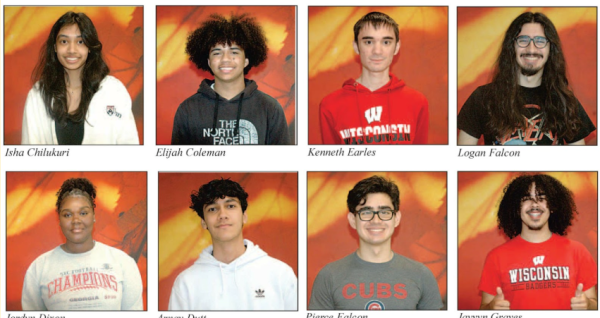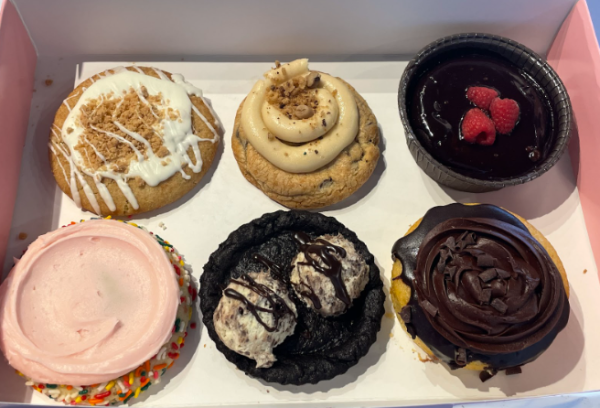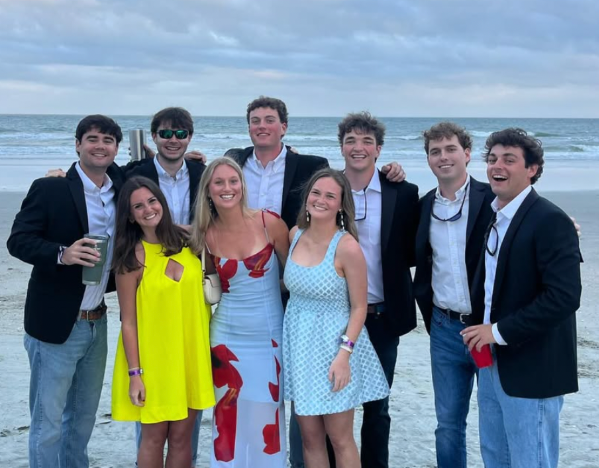Inside the Library: An Account of Jan. 24
One student’s heartbreaking text, sent to their family during the lockdown.
Trigger Warning: mentions of guns, violence, school shootings, and police
We were eating lunch in our usual spot, a table in the corner of the library, when at 12:30 p.m., a siren went off – an instantly recognizable sound for American high schoolers – an active threat. Realizing what this likely meant, we quickly followed the librarian’s instructions and piled into a smaller room with two walls of windows. The librarians directed us calmly and quickly to get down and be quiet. As the minutes passed, a growing sense of panic began to set in all around the room. With about 50 of us within the classroom, you could hear whispers of people speculating what was happening, the sound of worried teenagers beginning to cry, and the sound of uneasy breathing as we all waited to figure out what to do next. We all pulled out our phones, texting our loved ones about what was happening and sending our families the dreaded “i love you” messages. Emotions were high – while some people were trying to laugh it off, others were crying or experiencing panic attacks.
We waited for any updates, but even the teachers had no idea what was going on. We didn’t know anything about the situation, if someone was actively shooting up the school, or just was in possession of a weapon. Most of us assumed the worst, and every noise outside the room worried us more. On the other side of the phones, many parents were frantically listening to the Middleton Police Scanner – an open channel that became our primary source of information inside that room. Those of us who could contact our families passed our phones to those who couldn’t, as many of our friends didn’t have enough WiFi to even send a text message. Huddled together under tables as far away from the windows as possible, we waited.
After what felt like hours, but was probably closer to 30 minutes, we heard a sound that made our blood run cold. Loud yelling, the sound of a door slamming open. What happened next moved extremely fast, and in the dark lighting of the room, was very difficult to understand in the moment.
From our vantage point near the back of the classroom, we could only see a dark figure wearing what looked like a black hoodie, but found out later was a helmet and mask. In his hands was a long assault rifle equipped with a blinding flashlight. In that split second, many people who could not see up close believed that this figure was the student with a gun. By the time we registered that it was, in reality, an armed policeman, we were able to see two more behind him, rifles aimed towards the door.
From behind the door, commands were shouted at us: “STAND UP! HANDS UP! ON YOUR KNEES!” Panic swept across the room, and the quiet sniffles of several turned into sobbing and gasping of many. We saw a line of policemen standing and waiting outside the door. They continued to shout the name of the student who they expected to be armed, telling them to stand. When nobody moved, a fresh wave of terror crashed over us – was there a kid with a gun locked in the room with us? Had they been here the whole time? And why weren’t the police entering the room? “STAND UP. HANDS UP. TURN AROUND.” Facing the back of the room, we were met with the sight of shaking hands, surrounded by the rising sound of students sobbing.
One by one, we were pulled from the room. As we fully registered that there was police helping us, a new feeling washed over us: relief. After being led past six more police officers wielding rifles, we regrouped in the middle of the library.
Friends and strangers alike collapsed in each others’ embrace. Tears were heavy as we all came to grips with what we had just experienced, and that we were finally safe. The realization of what had happened hit us all at once, of what could have happened. One of the officers addressed us, explaining that they had thought that there was a student with a gun inside the room with us, and why they had to pull us out individually.
After that, we returned to our hiding positions in the side room. Those who were able called their families and friends, assuring them that we were still alive and that we were safe. It was surreal to talk to friends who had been in other parts of the school, comparing their experiences to ours. Many students had already left the building and were at their houses. We continued to stay down and silent for another 45 minutes, gleaning whatever information we could from the police scanner and updates from our parents. When it became clear that the immediate danger had passed, the librarians spoke to us, assuring that they were there for us, and understood the trauma we had undergone. It was the first words of comfort and support we had gotten from the school, and would end up being the last for longer than we had hoped.
After more uneasy waiting, a video was passed around on social media of the suspect being arrested. Once again, a new wave of relief washed over the room as we all realized it would be okay. The loud speaker came on, and everyone was ready to finally be able to go home and rest after an eventful and stressful day. However, hearing the words of our principal congratulating us on staying safe and following procedures, and telling us that we could now go to the third hour felt like a slap in the face. How were we supposed to pretend like everything was fine and head to class like nothing happened? The complete disregard for the emotional support students needed after what had happened was genuinely unbelievable. Not only was it scary for those of us in the library, but for anyone who was in the school that needed to hide under a table in fear of their lives. Many students, as well as us, decided to leave campus and go home after such a horrific day.
Why wasn’t the school more prepared for the aftermath of a situation like this? Why didn’t students have the same extensive preparation as teachers did? The harsh reality is we live in a world today where school shootings are often seen on the news. Between 2013 and 2019, there were 2,100 mass shootings in the U.S., killing over 2,400 people and injuring over 9,000. According to data from the Department of Homeland Security, there have been eight school shootings in WI since 2009. Though they are rare in our lives, they do happen and it is important to be prepared.
The communication from the school of this event was minimal and vague. Parents received an email that stated, “We are alerting you that as of 12:30 pm today, Middleton High, Clark Street and Kromrey has been placed under a full lockdown. We are working with the Middleton Police Department, who are currently on the scene at Middleton High School,” and then later, a second email that told them the situation had been resolved, saying that “Middleton Police were on the scene within minutes. The situation has been resolved, and there have been no injuries reported.” No specific details were provided as to what the threat was. This lack of communication from the school left parents wondering what was happening to their kids at school and failed to inform them of what was going on.
The communication to the teachers was also minimal. They received a message from the principal that revealed the students name and appearance, which was accidentally sent to all students as well. In a conversation with an MHS counselor, it became clear that little information was sent out afterwards as well – while they gained some information from the initial phone call, they weren’t informed about the events in the library until reading news articles later that day and hearing it firsthand from students. Not only is it scary to be left in the dark as a student, but also as a teacher.
One of the librarians had told us after the police came in that her number one fear was us getting hurt. All the teachers had to take the responsibility of being brave and protecting students, all while remaining calm themselves. Because no one in the school knew what was going on due to lack of communication, it only made the situation more traumatizing as no one knew if they were going to die that day.
In hindsight, there are many things the school could have done better, and must do better should a situation like this ever arise again. As a community, we look to our administration to protect the students of the future by devoting more time, planning, drills and resources towards this issue. While it is devastating that we had to go through this trauma to expose the underlying issues of communication, immediate reaction, and meaningful support, we have a chance now to make a real change. Student’s mental health cannot be an afterthought. It must never be sacrificed or disregarded in the name of continuing instruction.
This was one of the most terrifying experiences of our lives, and Middleton High School did a poor job at handling the situation. While we don’t blame the police for doing their jobs to get us out of the library safely, the school itself failed to provide students or teachers with information on what was happening and failed to provide mental health support quickly enough to kids who went through a traumatic experience.
Immediately after the lockdown was lifted, counselors were not easily available and the mental health of students wasn’t immediately being attended to. While the school did provide healing circles for students to talk with counselors and with each other, they weren’t available as an outlet for people until the Friday of that week. With situations like these becoming more prevalent in American society, it was a disappointment to see our school struggle to do what they have always promised to do: support their students.





